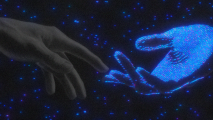Agility Robotics’ Cassie just became the first bipedal robot to complete an outdoor 5K run — and it did so untethered and on a single charge.
The challenge: To create robots that can seamlessly integrate into our world, it makes sense to design those robots to walk like we do. That should make it easier for them to navigate our homes and workplaces.
But bipedal robots are inherently less balanced than bots with three or more legs, so creating one that can stably walk, let alone run or climb stairs, has been a major challenge — but AI is helping researchers solve it.
“We were really able to reach the limits of the hardware and show what it can do.”
Jeremy Dao
Agility’s bipedal robot: Cassie is essentially a pair of robot legs attached at the hip. The bipedal robot was designed by engineers at Oregon State University and then licenced to OSU spinout Agility for production in 2017.
In April, researchers at UC Berkeley trained a Cassie robot to walk by letting a controller AI first explore and learn in simulated environments. The next month, an OSU team demonstrated how a Cassie robot’s AI could learn to climb up and down stairs through simulations.
Then, OSU researchers showed that their bipedal robot could teach itself to run through simulations.
Run time: To avoid falling over while running, Cassie needed to learn how to subtly shift its position to maintain balance while in motion, a skill known as “dynamic balancing.”
Once the AI learned how to do that in simulations, it was given control over the actual bipedal robot for real-world testing — and eventually, it was ready to tackle a five kilometer (3.1 miles) run around the OSU campus.
The cold water: Cassie’s run wasn’t flawless — the robot legs fell twice, once because a computer overheated, and once because the engineer steering them tried to take a turn too fast.
The bot didn’t exactly break any speed records, either, completing the run in a little more than 53 minutes — that’s about how long it takes a person to walk that far.
Winner, winner: Still, the fact that a bipedal robot was able to remain upright for the majority of such a long run over outdoor terrain is impressive — as is the fact it did it all on a single battery charge.
“Cassie is a very efficient robot because of how it has been designed and built, and we were really able to reach the limits of the hardware and show what it can do,” researcher Jeremy Dao said in a press release.
We’d love to hear from you! If you have a comment about this article or if you have a tip for a future Freethink story, please email us at [email protected].






